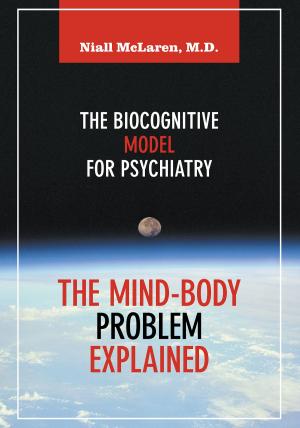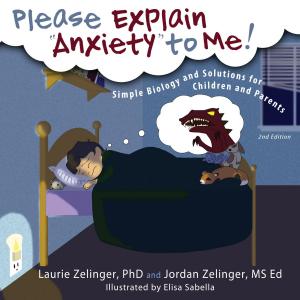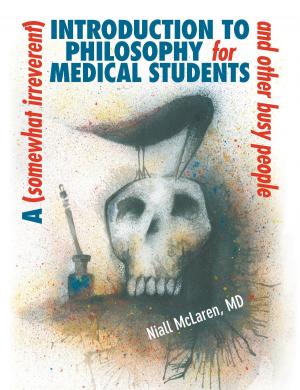Looking Through the Trauma Lens
Powerful Permanent Change with Traumatic Incident Reduction (TIR)
Nonfiction, Health & Well Being, Health, Ailments & Diseases, Nervous System & the Brain, Psychology, Mental Illness| Author: | Susan Sluiter | ISBN: | 9781615998685 |
| Publisher: | Loving Healing Press | Publication: | October 1, 2013 |
| Imprint: | Language: | English |
| Author: | Susan Sluiter |
| ISBN: | 9781615998685 |
| Publisher: | Loving Healing Press |
| Publication: | October 1, 2013 |
| Imprint: | |
| Language: | English |
I developed renewed faith in the power of psychotherapy after I attended a Traumatic Incident Reduction (TIR) course in 2011. It opened many doors for me as I began to understand the impact of previously overlooked, objectively minor traumatic incidents on psychological disorders and problems. This article is about the application of this powerful tool over the entire spectrum of psychological problems and disorders and how this brings about impressive and permanent change. The optimal use of this tool in psychotherapy requires a shift in epistemology in which we begin to view mental health through a trauma lens.
The definition of psychological trauma can vary. From a TIR perspective, trauma can be defined as any incident that had a negative physical or emotional impact on an individual. This is a very subjective issue as the something could be perceived as traumatic by one individual, but as commonplace and harmless by another. The important thing is the emotional and physical impact the incident had on the individual, its subjective impact.
The reason it is so important to view trauma in the broadest way possible is because it explains the chronic mood states of our clients as well as how subconscious intentions and automatic emotional responses affect their current lives. These will be explained below. Traumatic incidents, when understood in the broadest sense possible, have a massive effect on our neurobiology, emotional states and behavioral patterns. Therefore, they can be seen as the driving force behind almost all psychological problems and disorders. When I say traumatic incidents "in the broadest sense possible," I refer to the everyday incidents of trauma that are objectively perceived as minor, such as an embarrassing comment by a teacher, conflict with a friend, breaking your mother's expensive vase, etc. It involves an understanding of how the emotional knocks we take on a daily basis affect our neurobiology and continue to have an impact on us in later life. The understanding of subconscious intentions, automatic emotional reactions and responses and chronic mood states are so crucial when it comes to looking at mental health through a trauma lens. Minor and major psychological and physical trauma involves a complex description of the effects on the brain.
This article includes detailed case studies including specific incidents such as birth trauma and jealousy and rage. We will look in detail at how trauma results in Goleman's "Amygdala Hijacking" and how we can help the client break destructive cycles. I also explain why sheer willpower is insufficient to change behavior in the face of traumatic restimulation. Additionally, the article explains how TIR avoids re-traumatization even as clients revisit past incidents.
I developed renewed faith in the power of psychotherapy after I attended a Traumatic Incident Reduction (TIR) course in 2011. It opened many doors for me as I began to understand the impact of previously overlooked, objectively minor traumatic incidents on psychological disorders and problems. This article is about the application of this powerful tool over the entire spectrum of psychological problems and disorders and how this brings about impressive and permanent change. The optimal use of this tool in psychotherapy requires a shift in epistemology in which we begin to view mental health through a trauma lens.
The definition of psychological trauma can vary. From a TIR perspective, trauma can be defined as any incident that had a negative physical or emotional impact on an individual. This is a very subjective issue as the something could be perceived as traumatic by one individual, but as commonplace and harmless by another. The important thing is the emotional and physical impact the incident had on the individual, its subjective impact.
The reason it is so important to view trauma in the broadest way possible is because it explains the chronic mood states of our clients as well as how subconscious intentions and automatic emotional responses affect their current lives. These will be explained below. Traumatic incidents, when understood in the broadest sense possible, have a massive effect on our neurobiology, emotional states and behavioral patterns. Therefore, they can be seen as the driving force behind almost all psychological problems and disorders. When I say traumatic incidents "in the broadest sense possible," I refer to the everyday incidents of trauma that are objectively perceived as minor, such as an embarrassing comment by a teacher, conflict with a friend, breaking your mother's expensive vase, etc. It involves an understanding of how the emotional knocks we take on a daily basis affect our neurobiology and continue to have an impact on us in later life. The understanding of subconscious intentions, automatic emotional reactions and responses and chronic mood states are so crucial when it comes to looking at mental health through a trauma lens. Minor and major psychological and physical trauma involves a complex description of the effects on the brain.
This article includes detailed case studies including specific incidents such as birth trauma and jealousy and rage. We will look in detail at how trauma results in Goleman's "Amygdala Hijacking" and how we can help the client break destructive cycles. I also explain why sheer willpower is insufficient to change behavior in the face of traumatic restimulation. Additionally, the article explains how TIR avoids re-traumatization even as clients revisit past incidents.















